 Read Leonard Lindoy’s latest supramolecular host-guest formation research in this Dalton Transactions Hot article.
Read Leonard Lindoy’s latest supramolecular host-guest formation research in this Dalton Transactions Hot article.
Lindoy’s group make helicates and tetrahedral Ni and Fe host complexes from quaterpyridine ligand derivatives, and look how they can control which products they get. They are particularly interested in the cavity volumes of the tetrahedral cages they make, and hope in the future to look at the host-guest chemistry of the cages with the largest cavities.
Read the full article for FREE to find out more…
New nickel(II) and iron(II) helicates and tetrahedra derived from expanded quaterpyridines
Christopher R. K. Glasson, George V. Meehan, Cherie A. Motti, Jack K. Clegg, Peter Turner, Paul Jensen and Leonard F. Lindoy
Dalton Trans., 2011, DOI: 10.1039/C1DT10667H
This manuscript will be part of the issue celebrating the 40th Anniversary of Dalton Transactions. Click on the 40th Anniversary link on the right hand side to find out what else we are doing.











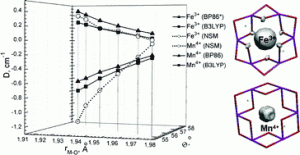


 In this Dalton Transactions Hot article Andrew Burrows and Frank Marken and colleagues from the University of Bath make MOFs of zincII and aluminiumIII dicarboxylate frameworks with covalently attached ferrocene functional redox groups.
In this Dalton Transactions Hot article Andrew Burrows and Frank Marken and colleagues from the University of Bath make MOFs of zincII and aluminiumIII dicarboxylate frameworks with covalently attached ferrocene functional redox groups.![Co(III) sarcophagine and p-sulfonated calix[4]arene supermolecules](http://www.rsc.org/ej/DT/2011/c1dt10550g/c1dt10550g-f1.gif) In this Dalton Transactions Hot article Colin Raston and collaborators from the University of Western Australia and the University of Malaya look at CoIII sarcophagine-type cage molecules.
In this Dalton Transactions Hot article Colin Raston and collaborators from the University of Western Australia and the University of Malaya look at CoIII sarcophagine-type cage molecules.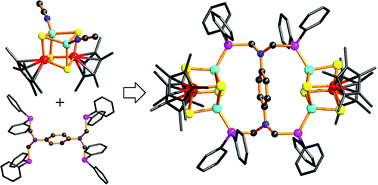 This HOT article describes the synthesis and crystal structures of four mono- or bi-cyclic Mo/S/Cu clusters from a pre-designed cluster [(η5-C5Me5)2Mo2(µ3-S)4(CuMeCN)2]2+ with tetraphosphine or N,P mixed ligands. The femtosecond third order non-linear optical (NLO) performances of the products are enhanced due to the increased number of cluster cores. As both the cluster-based building blocks and the multiple organic linkers are pre-designed, it could be useful for the rational design and assembly of coordination frameworks, possibly allowing the preparation of other new materials with enhanced NLO performance.
This HOT article describes the synthesis and crystal structures of four mono- or bi-cyclic Mo/S/Cu clusters from a pre-designed cluster [(η5-C5Me5)2Mo2(µ3-S)4(CuMeCN)2]2+ with tetraphosphine or N,P mixed ligands. The femtosecond third order non-linear optical (NLO) performances of the products are enhanced due to the increased number of cluster cores. As both the cluster-based building blocks and the multiple organic linkers are pre-designed, it could be useful for the rational design and assembly of coordination frameworks, possibly allowing the preparation of other new materials with enhanced NLO performance.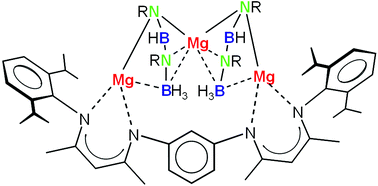
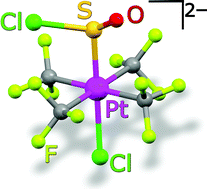 In this HOT article, Fornies and co-workers describe the efficient stereoselective synthesis of salts of any of the following trifluoromethylplatinum(IV) isomeric couples: cis-/trans-[Pt(CF3)4Cl2]2- and fac-/mer-[Pt(CF3)3Cl3]2-. All these compounds can be isolated in high yields and have been characterised by a combination of analytical, spectroscopic and X-ray diffraction methods.
In this HOT article, Fornies and co-workers describe the efficient stereoselective synthesis of salts of any of the following trifluoromethylplatinum(IV) isomeric couples: cis-/trans-[Pt(CF3)4Cl2]2- and fac-/mer-[Pt(CF3)3Cl3]2-. All these compounds can be isolated in high yields and have been characterised by a combination of analytical, spectroscopic and X-ray diffraction methods.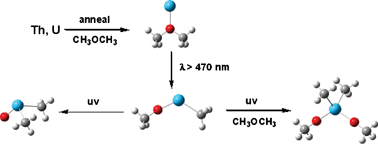 In this Dalton Transactions Hot article Yu Gong and Lester Andrews from the University of Virgina, USA, look at how laser-ablated thorium and uranium react with dimethyl ether molecules.
In this Dalton Transactions Hot article Yu Gong and Lester Andrews from the University of Virgina, USA, look at how laser-ablated thorium and uranium react with dimethyl ether molecules.